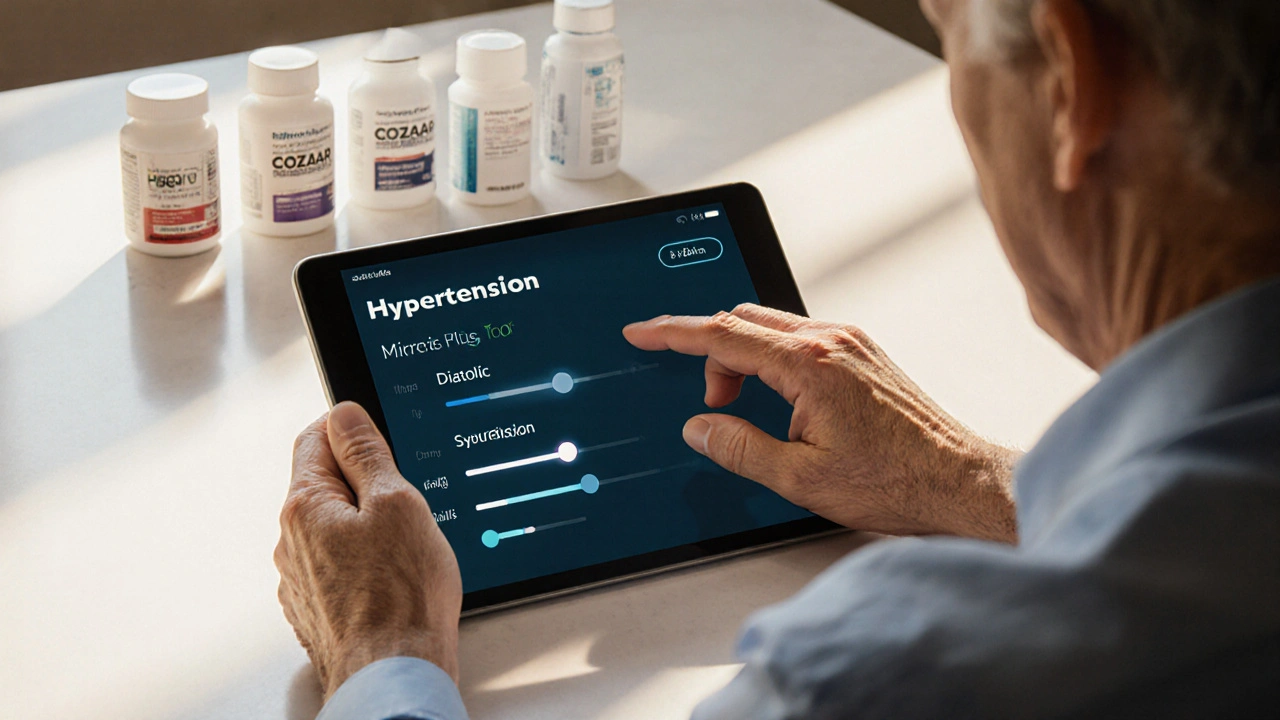

When looking at Telmisartan alternatives, other medicines you can use instead of telmisartan for high blood pressure. Also known as telmisartan substitutes, they help control hypertension when telmisartan isn’t suitable.
One group you’ll often see is Angiotensin II Receptor Blockers (ARBs), drugs that block the same receptor as telmisartan, keeping blood vessels relaxed. Telmisartan alternatives also include ACE inhibitors, medicines that stop the conversion of angiotensin I to angiotensin II, lowering pressure from a different angle. These two classes are the core of the substitution landscape, and most clinicians will pick from them based on patient history.
First, ask yourself whether kidney function is normal. ARBs tend to be gentler on the kidneys than some ACE inhibitors, but both need dose adjustments for reduced clearance. Second, consider the side‑effect profile: cough is common with ACE inhibitors, while ARBs rarely cause it but might raise potassium a bit. Third, check for drug interactions—if the patient is already on potassium‑sparing diuretics, an ARB might push potassium too high.
Cost also plays a big role. Generic versions of losartan, valsartan, and irbesartan are widely available and often cheaper than brand‑name telmisartan. Insurance formularies usually prioritize these generics, so a switch can save money without sacrificing efficacy. However, some patients report better blood‑pressure control with telmisartan’s longer half‑life, so the trade‑off between price and dosing convenience matters.
Another practical angle is dosing frequency. Telmisartan is taken once daily; many ARBs share that schedule, but a few, like candesartan, may require twice‑daily dosing for optimal control. Simpler regimens improve adherence, which in turn boosts long‑term outcomes. If a patient struggles with daily pills, a once‑daily ARB or even a combination pill with a thiazide may be the answer.
From a safety standpoint, be aware of contraindications. Pregnancy is a clear no‑go for both ARBs and ACE inhibitors due to fetal toxicity. If a woman of child‑bearing age needs blood‑pressure control, alternatives like methyldopa or labetalol become relevant. Also, patients with a history of angio‑edema should avoid ACE inhibitors and usually stay away from ARBs as well.
Finally, monitor the response. Blood‑pressure targets (usually <130/80 mmHg for most adults) should be checked after two weeks of any switch, then again at one month. If the new drug doesn’t hit the goal, clinicians may add a low‑dose thiazide or consider a different class altogether, such as a calcium‑channel blocker. This stepwise approach ensures the chosen telmisartan alternative truly meets the patient’s needs.
All these points—kidney function, side effects, cost, dosing, safety, and monitoring—create a roadmap for anyone evaluating telmisartan substitutes. Below you’ll find a curated set of articles that dive deeper into each alternative, compare efficacy, and offer buying tips, so you can make an informed decision without hunting through endless sources.

A detailed comparison of Micardis Plus (telmisartan + hydrochlorothiazide) versus top hypertension alternatives, covering efficacy, side effects, cost and who should use it.